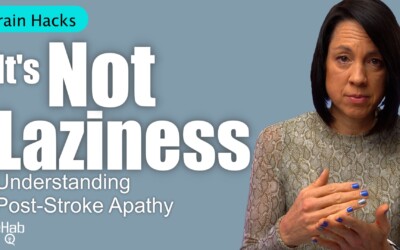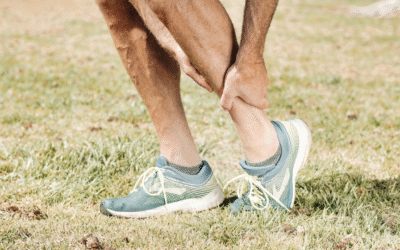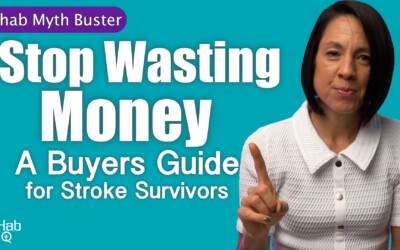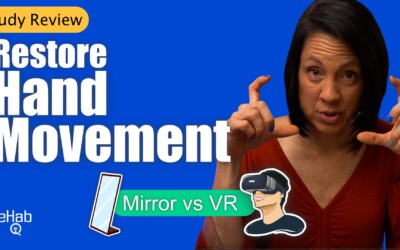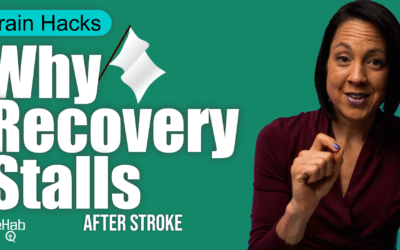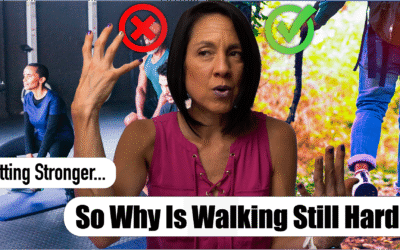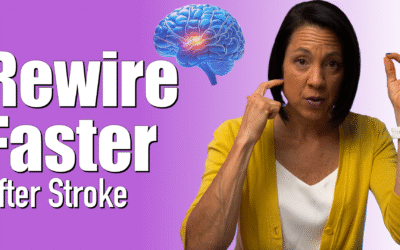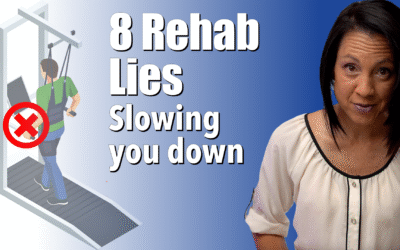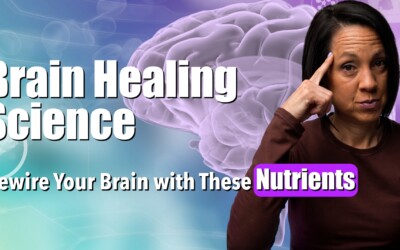What is Knee Hyperextension after a Stroke?
Knee hyperextension is a common problem after a stroke. Knee hyperextension is when the knee goes beyond a straight position. Yeah, not exactly natural looking or feeling. ?
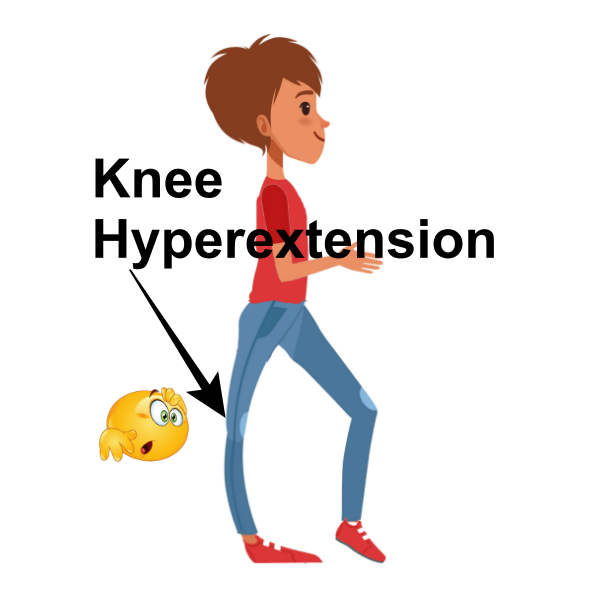
Knee hyperextension (recurvatum) usually happens in the involved leg. It is the most obvious when full body weight is placed on the leg (stance phase). For instance, when swinging the uninvolved leg during walking.
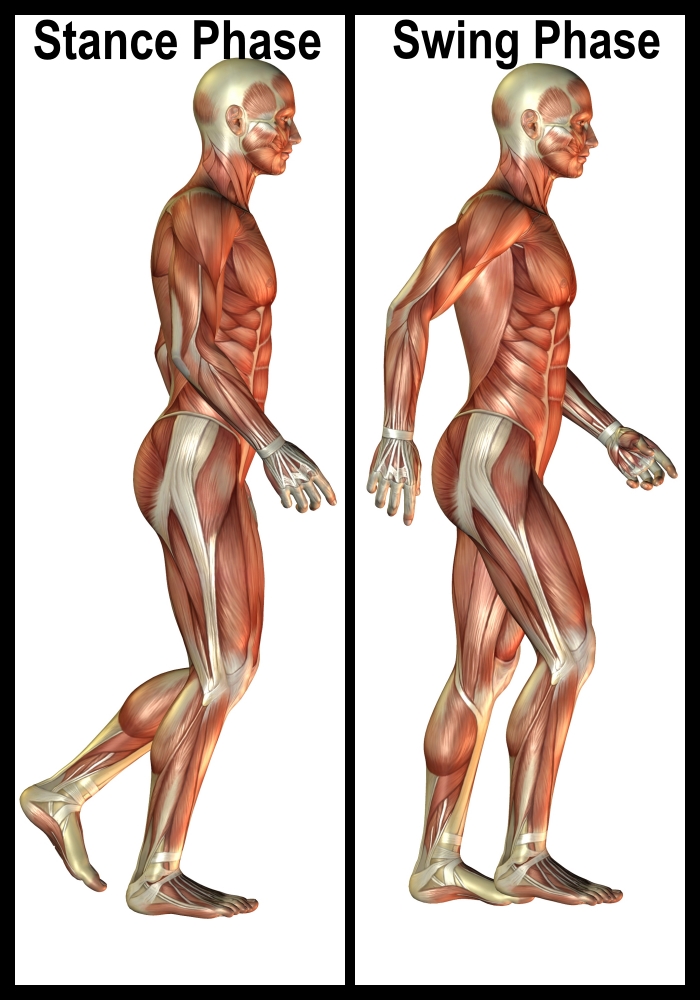 .
.
This can create hip pain, back pain, and of course knee pain. When the knee extends unnaturally during stance, it can also make it impossible to bend the knee to swing the leg through (swing phase). This might cause you to swing your leg out to the side to clear the ground.
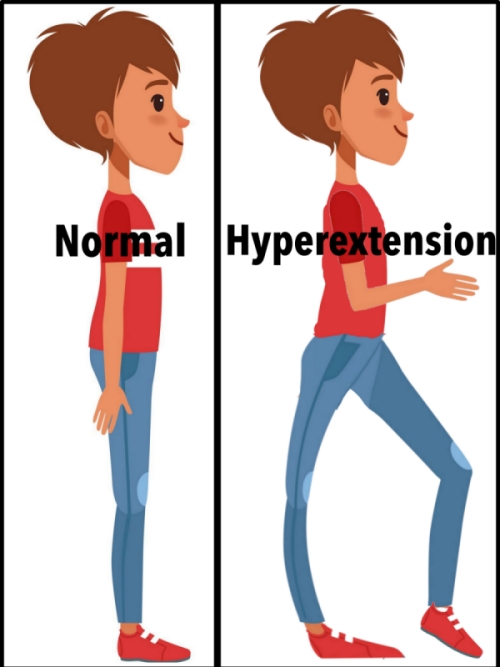
What causes knee hyperextension after a stroke?
Knee hyperextension is caused by poor control in the muscles around the knee. This can happen due to under-active hamstring muscles (muscles that bend the knee) or overactive quadriceps muscles (muscles that straighten the knee).
What are the best exercises to help decrease knee hyperextension after a stroke?
So, the focus of the exercises is two-fold. One is to relearn how to bend the knee by teaching the brain how to “turn off” the overactive quadriceps. The second part of the exercise focus is to retrain the muscles that bend the knee.
The final part of the training will be relearning how to stand. The focus of standing will include learning how to engage the quadriceps enough to support your body weight, without going into hyperextension.
If you have made it this far, I am sure you really want to know “the how”. So let’s get right to it…..
How to strengthen weak muscles around the knee to stop knee hyperextension after a stroke?
As I stated, part of preventing knee hyperextension is to retrain the muscles that bend the knee. Heel slides are an excellent activity for this. To perform a heel slide, you want to lay on your back. Next, try and bend the knee by pressing your heel down into the mat (or whatever surface you are on 🙂 )
Heel slides:
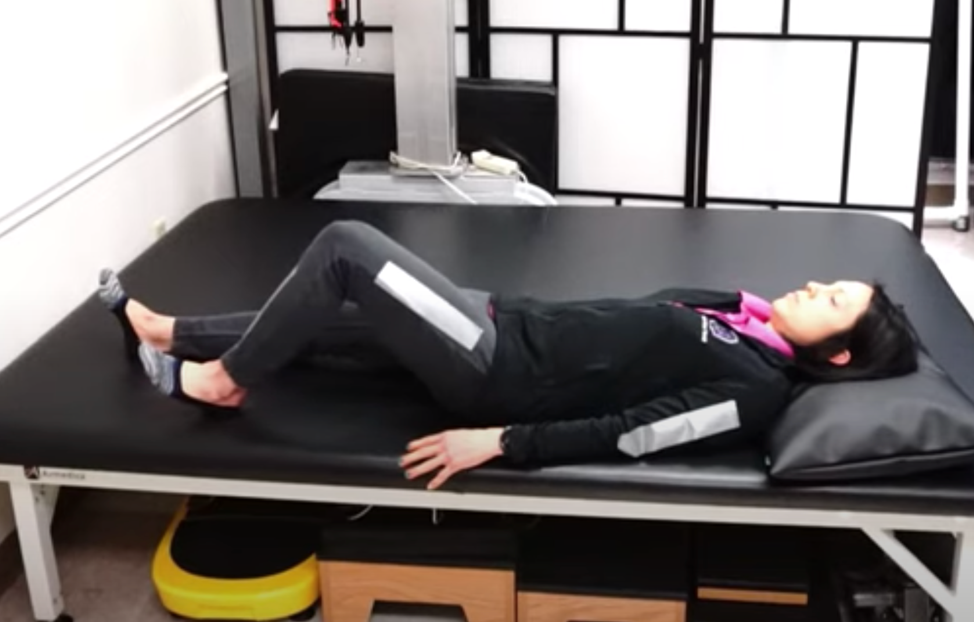
Modified Heel Slide:
If you are unable to bend your knee with it flat on the bed/mat, here is a modification.
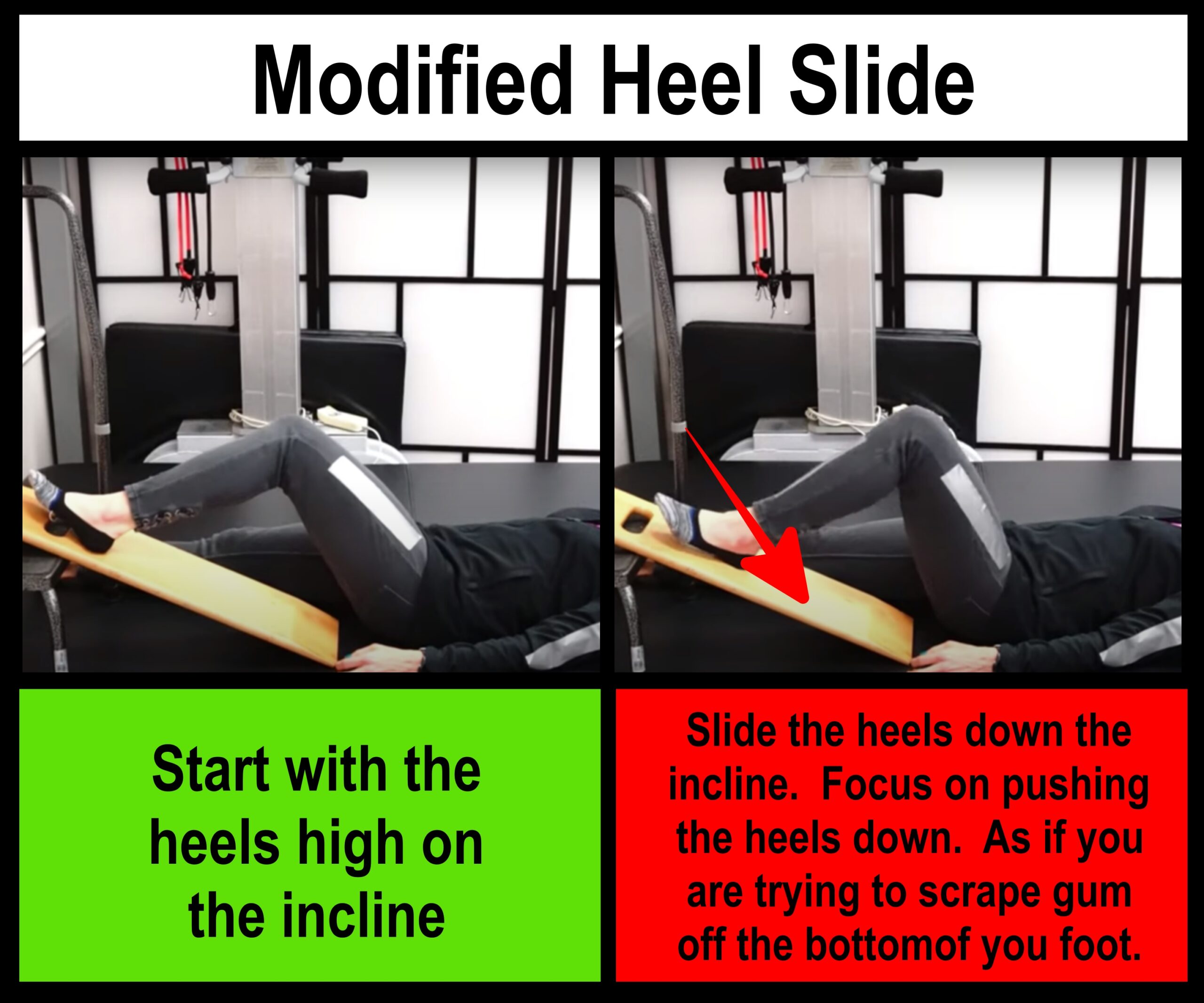
Standing:
Next you want to try and straighten the leg in standing without hyperextension. Now, this might take a TON of practice so be patient. The main thing to focus on is maintaining a “crouched” position with both knees bent.
Step one
Shift your body weight to the involved leg
Step two
Try and step the uninvolved leg forward while maintaining a slight bend in the involved knee.
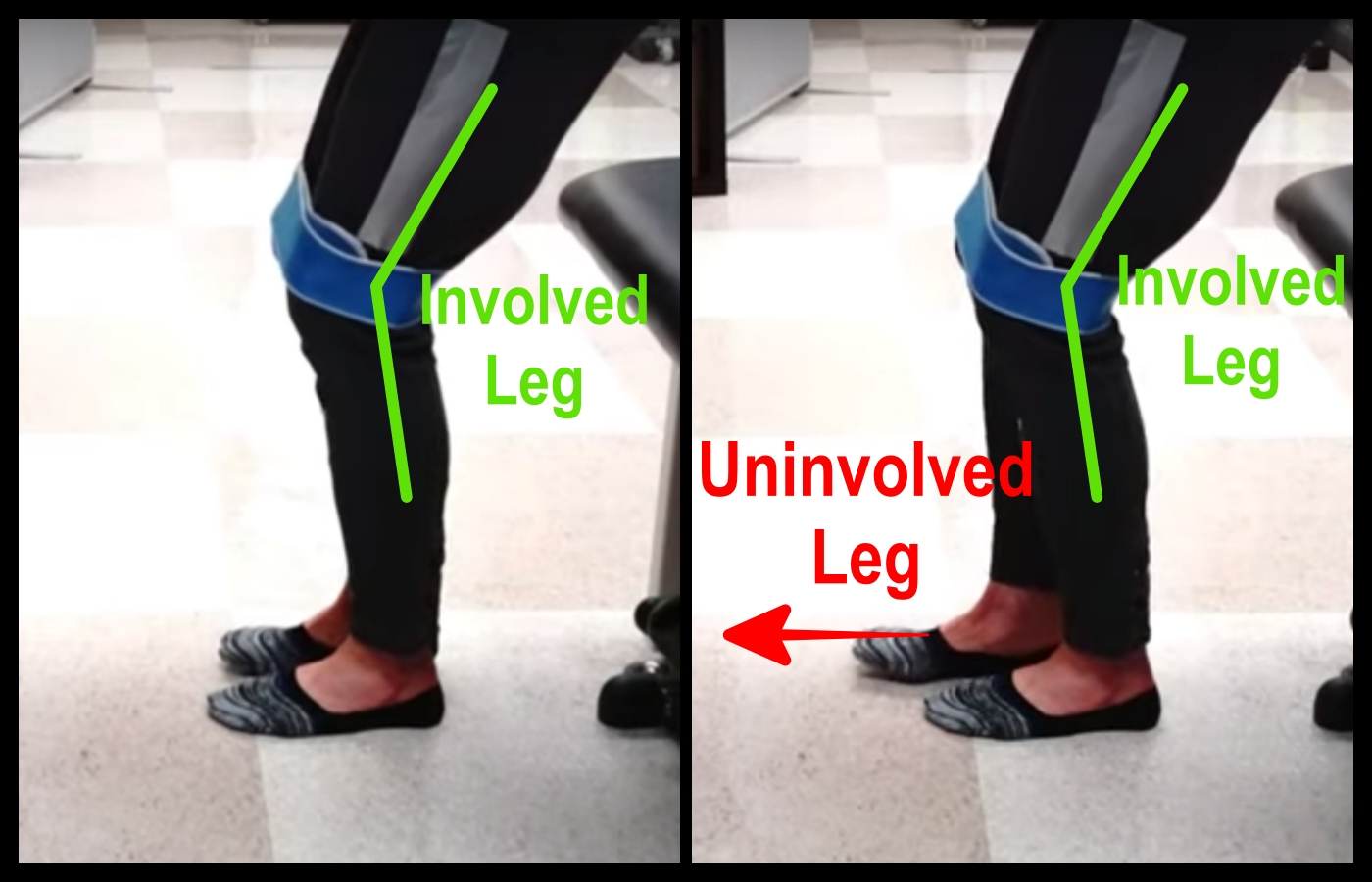
Other articles you may be interested in:
Stroke Recovery and Apathy: What It Is and How to Overcome It
What’s Really Going On When Motivation Disappears After Stroke Recovering from a stroke is a journey that requires strength, patience, and persistence. But for many stroke survivors, the hardest part isn’t weakness, fatigue, or memory loss. It’s something less visible...
Spasticity or Weakness? Understanding Your Stroke Symptoms
How Can You Tell If It’s Spasticity or Weakness After Stroke? https://youtu.be/3QR9D4rBNhc If you’ve had a stroke, you’ve probably heard a few of these words tossed around: spasticity, weakness, stiffness, foot drop. They might all sound similar, but they each tell a...
Master Ankle Mobility: Exercises for Better Walking
Ankle Mobility Exercises to Boost Balance and Walking Ankle stiffness is one of the most common issues people face after a stroke or any neurologic injury. It can make walking harder, cause your toes to catch, or even affect your balance. But here’s the thing,...
Should You Spend Money on Stroke Rehab Devices?
Are Trendy Rehab Treatments and Devices Worth It? Here's My Honest Take https://youtu.be/T69LavHLdIQ Should you be spending your hard-earned money on all those rehab devices popping up in your social media feed? And if so, which one is actually worth it? The truth?...
Restore Hand Movement After Stroke with Mirror Therapy
Mirror Therapy & VR: Stroke Recovery for the Hand https://youtu.be/OeThZMwJt40 If you’ve lost movement in your arm after a stroke, you’ve probably wondered: “Is my arm just weak, or is something deeper going on in my brain?” That’s not because your muscles forgot...
Stroke Recovery Plateau: What to Do
Why Stroke Recovery Stalls and How to Push Through Recovery may feel stuck, but progress is still possible. Here’s how to keep improving after a plateau. https://youtu.be/w6xZZpx7tDY Recovering from a stroke or neurologic injury can feel overwhelming. Walking,...
Why Your Stroke Exercises Aren’t Helping and How to Fix It
Stroke Recovery Tips: When Exercises Don’t Seem to Work https://youtu.be/9r06T9gtsYc Is it possible to be making progress after a stroke or neurologic injury and still feel like your movement is getting stiffer, heavier or just plain harder?Absolutely. And let me tell...
Boost Stroke Recovery: 3 Brain Habits That Actually Work
Want to Rewire Your Brain Faster After Stroke? Try These 3 Habits https://youtu.be/iFcjDtHrrwM If you’ve been on this neuro-recovery journey, you know it can feel like progress is slow. You do your exercises, you follow instructions, but sometimes your brain seems…...
Stroke Recovery Myths Debunked: The Truth About Healing
8 Neuro Rehab Myths That Are Holding You Back (And What to Do Instead) Debunking Common Myths About Neurologic Recovery https://youtu.be/chTfi1d5kn4 If you’ve ever been told that your recovery after a neurologic injury has an expiration date, or if your physical...
Best Foods for Brain Healing and Mental Clarity
Brain Recovery Nutrition How Diet Fuels Healing and Focus https://youtu.be/P5UJMJJRVdw When it comes to stroke recovery, exercise and rehab often take the spotlight. But what if the foods you eat and the nutrients inside them could also play a powerful role in healing...

